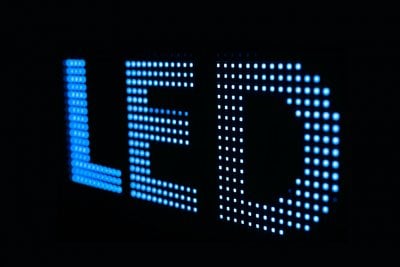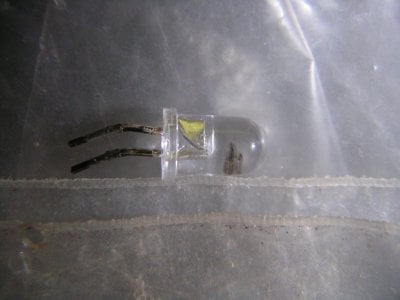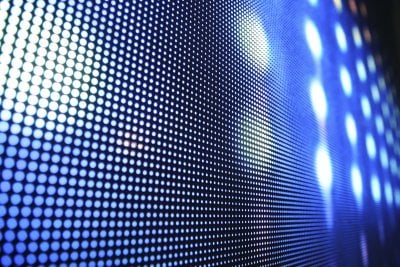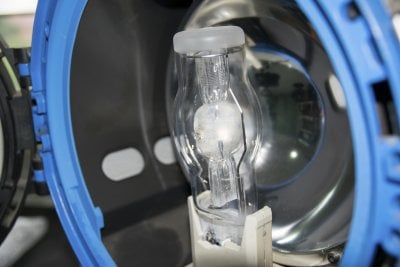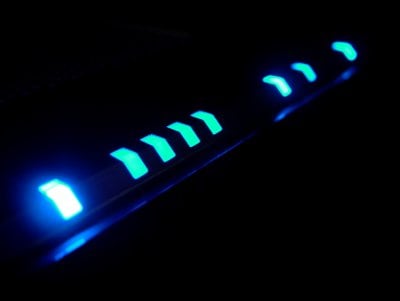- Joined
- Jun 14, 2016
- Messages
- 263
- Reaction score
- 518
Are LEDs a suitable primary light source?
All images are public domain images courtesy of i stock and morgue file.
Since the release of Ecotech’s Radion lighting, LED fixtures have become common over reef aquariums. In fact, the hobby saw an explosion of LED lighting, with nearly every brand of reef lighting releasing their own LED lighting system. LED lighting fueled the rise of a few new lighting companies which specialize only in affordable, reef capable fixtures. It happened fast and looking back, it seems as though LED lighting went from super expensive, too affordable, seemingly overnight. Many reef keepers saw only benefits when investing in LED lighting; the fixtures ran much cooler than traditional T5’s or metal halides, they used far less electricity and offered a full range of spectrums, re-creating an entire morning to night light cycle. Only now are we starting to see some of the downfalls of LED lighting. In many ways, the steady increase in reef keeper’s numbers may be tied directly to the rise of LED lighting.
Shadowing appears to be a major concern, leaving some areas of coral totally un-illuminated. LED lighting is famous for creating hot-spots within the tank, areas where PAR (photosynthetic active radiation) is very high but available light falls off to unacceptable levels, just inches away.
Reef keepers have learned that adopting LED lighting means either using a lot of fixtures or being very creative with coral placement. Some aquarists have abandon LED use altogether, reverting back to T5 fluorescent lighting or metal halides. Recently I added a 250-watt halide to my aquarium, which was a tough decision, since I once saw only benefits to using LEDs. While LED lighting is exceptional for creating a 24-hour day-night cycle, are they the best lighting option for growing coral? Will creative enhancements like Ecotech’s hemispherical edge illumination raise the bar for LED lighting? Or are the tried and proven lighting systems of yesteryear really the best option for growing coral?
What are LEDs:
LED infamously stands for light emitting diode. Simply put, they are a two-lead semi-conductor light source. When voltage is applied, an LED releases energy in the form of photons, thus creating light. This effect is known as electroluminescence and it separates LEDs from traditional light sources that use gas or chemical reactions to create light. Since LEDs are small, often an optical component (or lens) is used to shape their light pattern. This means that an LED light fixture is only as good as its lens.
We often think of LED lighting as relatively new technology, yet the ability to create electroluminescence was discovered in 1907. It wasn’t until 1951 that the first LED lights were created, primarily for commercial and industrial purposes. LED lighting is a true single point light source, meaning that each individual diode creates a cone of light. Areas not illuminated by electrical discharge are filled with a vacuum of wasted heat. It’s this fact that makes them less than ideal for lighting a reef aquarium, an application that requires a light source that blankets everything. Even when a dense cluster of diodes is created, there are still areas entirely shaded, as the light beam created is cone shaped and leaves wide swaths uncovered by useable light.
When placed over a reef aquarium, LEDs often fail to evenly distribute light. Areas of the tank right under an LED cluster often have a very high PAR (sometimes exceeding 700) yet isolated areas of the tank are left without a capable amount of light radiation. The result is shading, or shadowing, which leaves some corals without a blanket of light and can affect growth patterns. In some cases, corals are so light starved that they fail to thrive. The aquarist is mystified as to why under seemingly high output lighting their corals aren’t growing, or worse, slowly receding. It seems as though the cone of light produced by individual diodes cannot be increased by adding more LEDs to the cluster. A group of diodes simply creates one large, high radiation cone, with PAR levels that fall off just outside the cluster’s center.
Are LEDs a viable primary light source:
While T5 and metal halide lighting generate a lot of heat and use a lot of electricity, they both create a uniform blanket of light. T5 lighting is famous for creating an even spread of PAR readings from one end of a tank to another. While metal halide lighting does produce some shading, when combined with T5 fluorescent tubes, the entire tank is bathed in capable light radiation. We are now seeing aquarists combining LED lighting with T5 and metal halide, and the development of dimmable halide bulbs has increased their usage among reef keepers. Using a dimmable halide, it’s possible to create a day-night cycle not unlike that produced by LEDs, without the concern of spotty PAR readings. LED fixtures still maintain a premium price and often a tank needs quite a few to accomplish a robust lighting profile.
While LED fixtures are sleek and easy to install under any application, they also make keeping light hungry corals challenging. It could be argued that when keeping SPS coral species, metal halide/T5 combination fixtures will still provide the best results. I personally added a 250-watt metal halide to my LED fixtures, largely because corners of the tank were getting under-served by active radiation. Over the past few halide-less years, I had forgotten the allure of the rich light they produce and as soon as I booted the fixture up, I was taken back to the warm glow of halide only lighting. It’s certainly arguable that no other lighting solution provides such a rich, fluid blanket of light.
However, determining if LEDs alone are viable sources of light, requires a better assessment. It’s certainly true that using multiple fixtures creates acceptable PAR readings throughout even a large reef aquarium. However, it’s tough to get totally accurate PAR readings from every nook and cranny within the tank. One issue with LED lighting comes from the nature of using diodes to produce useable light. Diodes create a cone of light, with the center of the cone being the area of best output. While LED light spreads out, it becomes less useable by photosynthetic organisms the farther away from the diode’s center a coral gets. Given that many popular LED lights contain two, three or four pucks of multiple diodes, there is relatively isolated spots of powerful, useable light. Depending on how a coral is placed, areas of the surface may be shadowed and even though it appears the specimen is illuminated, in reality it’s getting little useable light.
In my reef, PAR readings within 10 inches of an LED puck’s output range, a few inches below the water’s surface, usually hover around 250-300, dropping sharply the deeper an object is. Outside of that 10-inch range, PAR quickly drops to 160 on down to 100 and below. Considering that even LPS corals often grow best under blue spectrum light of at least 200 PAR, this can make for challenging growing conditions. Adding an additional fixture creates another lighting hotspot, which similar range. Many aquarists install LED lights thinking they are capable of growing corals in a 24x24 inch area of a tank. This is solely dependent on how the corals are placed and the depth of the tank, along with how high the lights are mounted. This fact has also encouraged the development of “frag flat” style tanks, which use a shallow build to maximize light penetration. We want coral frags to grow a uniform pattern with lots of surface area, making a desirable colony. Shadowing and PAR drops can cause corals to grow strange patterns, where one area of a coral has accelerated growth but other areas maintain dwarfed, due to lack of useable light. I would say that using LED lighting only requires careful, creative placement of corals, to ensure all the animals are getting adequate light.
By adding a 250 watt, 14k metal halide in the center of two hanging LED fixtures, I was surprised by the changes in PAR. Dropping deeper into the tank, where PAR usually dropped below 200, the halide was able to maintain 260 PAR within 18-20 inches from the halides’ center. In higher areas of the tank, within 20 inches away from the halides’ center, PAR in excess of 300 was available. Also, coral frags such as montipora and acropora are bathed uniformly in light, eliminating dead spots where tissue bleaches or becomes discolored. I lost a quarter sized chunk of growth in the middle of a large montipora colony in the center of my tank, since it sat right in the medium zone between two high intensity LED outputs. There simply wasn’t a good why that I could bridge that gap with light. Now that a halide has been in place for several months, that gap is closing up with measurable growth week by week. It’s quite impressive.
The LED dilemma:
While LED light fixtures cost more than metal halides, they are also far sleeker and very energy efficient. They don’t require nearly as large an external ballast to run, and LED ballasts often run much cooler than a comparable metal halide ballast. The frustrating and bulky design of metal halides is absent when using LEDs and the slim style of LED fixtures make them easy to mount in a variety of ways. LEDs also offer the aquarist a host of different lighting spectrums and colors, making it very easy to showcase the colors of various corals. However, it seems as though regardless the number of fixtures, their output or distance between the water’s surface, issues with shading and dropping PAR are present.
Some aquarists consider LEDs more of a secondary light source as opposed to a primary one. Much how T5 tubes are combined with metal halides, a combination of LEDs and halides gives aquarists powerful, uniform and blanketing light and complete control over photoperiod and color. While combining halides and LED does work, the aquarist loses many of the benefits brought forth by LED lighting. Once again, lighting is using a lot of power and generating a lot of heat. While most LED fixtures create less heat than T5/halide combos, they aren’t without the need to be cooled internally by a fan.
For aquarists, it’s becoming a buzz-kill. Several years ago, when LEDs began to dominate reef tanks, it seemed as though we were getting our cake and eating it too. Though, the reef aquarium hobby moves slowly and with several years of LED only lighting under the collective reefing communities’ belt, shortcomings are being identified with these next generation lights. For moderate reef aquarists who are after a pretty tank with as little hassle as possible, LED lights often work quite well. But for those of us trying to maximize growth rates and achieve the best polyp extension and coloration (especially in SPS corals) sometimes LEDs alone fall short.
In my personal view, it requires aquarists to make a choice, when determining the future of their system’s lighting profile. If you are satisfied with measurable coral growth and overall healthy colonies, along with a bit of restrictions on what species you can keep, but don’t want to hassle with mitigating heat and multiple light sources, chances are an LED fixture will work fine. However, if you’re dead set on the use of water quality, amino-acids, feeding and other methodologies that push coral growth to the limits, then it’s very likely you will want to invest the time and money into a multiple light source profile. The allure of metal halides is strong, as they create arguably the most beautiful and dynamic light of any reef capable light source and many aquarists are pleased to continue using them. However, in the long run, they are expensive and far from hassle free – but the same goes for reef keeping as a hobby as well.
All images are public domain images courtesy of i stock and morgue file.
Since the release of Ecotech’s Radion lighting, LED fixtures have become common over reef aquariums. In fact, the hobby saw an explosion of LED lighting, with nearly every brand of reef lighting releasing their own LED lighting system. LED lighting fueled the rise of a few new lighting companies which specialize only in affordable, reef capable fixtures. It happened fast and looking back, it seems as though LED lighting went from super expensive, too affordable, seemingly overnight. Many reef keepers saw only benefits when investing in LED lighting; the fixtures ran much cooler than traditional T5’s or metal halides, they used far less electricity and offered a full range of spectrums, re-creating an entire morning to night light cycle. Only now are we starting to see some of the downfalls of LED lighting. In many ways, the steady increase in reef keeper’s numbers may be tied directly to the rise of LED lighting.
Shadowing appears to be a major concern, leaving some areas of coral totally un-illuminated. LED lighting is famous for creating hot-spots within the tank, areas where PAR (photosynthetic active radiation) is very high but available light falls off to unacceptable levels, just inches away.
Reef keepers have learned that adopting LED lighting means either using a lot of fixtures or being very creative with coral placement. Some aquarists have abandon LED use altogether, reverting back to T5 fluorescent lighting or metal halides. Recently I added a 250-watt halide to my aquarium, which was a tough decision, since I once saw only benefits to using LEDs. While LED lighting is exceptional for creating a 24-hour day-night cycle, are they the best lighting option for growing coral? Will creative enhancements like Ecotech’s hemispherical edge illumination raise the bar for LED lighting? Or are the tried and proven lighting systems of yesteryear really the best option for growing coral?
What are LEDs:
LED infamously stands for light emitting diode. Simply put, they are a two-lead semi-conductor light source. When voltage is applied, an LED releases energy in the form of photons, thus creating light. This effect is known as electroluminescence and it separates LEDs from traditional light sources that use gas or chemical reactions to create light. Since LEDs are small, often an optical component (or lens) is used to shape their light pattern. This means that an LED light fixture is only as good as its lens.
We often think of LED lighting as relatively new technology, yet the ability to create electroluminescence was discovered in 1907. It wasn’t until 1951 that the first LED lights were created, primarily for commercial and industrial purposes. LED lighting is a true single point light source, meaning that each individual diode creates a cone of light. Areas not illuminated by electrical discharge are filled with a vacuum of wasted heat. It’s this fact that makes them less than ideal for lighting a reef aquarium, an application that requires a light source that blankets everything. Even when a dense cluster of diodes is created, there are still areas entirely shaded, as the light beam created is cone shaped and leaves wide swaths uncovered by useable light.
When placed over a reef aquarium, LEDs often fail to evenly distribute light. Areas of the tank right under an LED cluster often have a very high PAR (sometimes exceeding 700) yet isolated areas of the tank are left without a capable amount of light radiation. The result is shading, or shadowing, which leaves some corals without a blanket of light and can affect growth patterns. In some cases, corals are so light starved that they fail to thrive. The aquarist is mystified as to why under seemingly high output lighting their corals aren’t growing, or worse, slowly receding. It seems as though the cone of light produced by individual diodes cannot be increased by adding more LEDs to the cluster. A group of diodes simply creates one large, high radiation cone, with PAR levels that fall off just outside the cluster’s center.
Are LEDs a viable primary light source:
While T5 and metal halide lighting generate a lot of heat and use a lot of electricity, they both create a uniform blanket of light. T5 lighting is famous for creating an even spread of PAR readings from one end of a tank to another. While metal halide lighting does produce some shading, when combined with T5 fluorescent tubes, the entire tank is bathed in capable light radiation. We are now seeing aquarists combining LED lighting with T5 and metal halide, and the development of dimmable halide bulbs has increased their usage among reef keepers. Using a dimmable halide, it’s possible to create a day-night cycle not unlike that produced by LEDs, without the concern of spotty PAR readings. LED fixtures still maintain a premium price and often a tank needs quite a few to accomplish a robust lighting profile.
While LED fixtures are sleek and easy to install under any application, they also make keeping light hungry corals challenging. It could be argued that when keeping SPS coral species, metal halide/T5 combination fixtures will still provide the best results. I personally added a 250-watt metal halide to my LED fixtures, largely because corners of the tank were getting under-served by active radiation. Over the past few halide-less years, I had forgotten the allure of the rich light they produce and as soon as I booted the fixture up, I was taken back to the warm glow of halide only lighting. It’s certainly arguable that no other lighting solution provides such a rich, fluid blanket of light.
However, determining if LEDs alone are viable sources of light, requires a better assessment. It’s certainly true that using multiple fixtures creates acceptable PAR readings throughout even a large reef aquarium. However, it’s tough to get totally accurate PAR readings from every nook and cranny within the tank. One issue with LED lighting comes from the nature of using diodes to produce useable light. Diodes create a cone of light, with the center of the cone being the area of best output. While LED light spreads out, it becomes less useable by photosynthetic organisms the farther away from the diode’s center a coral gets. Given that many popular LED lights contain two, three or four pucks of multiple diodes, there is relatively isolated spots of powerful, useable light. Depending on how a coral is placed, areas of the surface may be shadowed and even though it appears the specimen is illuminated, in reality it’s getting little useable light.
In my reef, PAR readings within 10 inches of an LED puck’s output range, a few inches below the water’s surface, usually hover around 250-300, dropping sharply the deeper an object is. Outside of that 10-inch range, PAR quickly drops to 160 on down to 100 and below. Considering that even LPS corals often grow best under blue spectrum light of at least 200 PAR, this can make for challenging growing conditions. Adding an additional fixture creates another lighting hotspot, which similar range. Many aquarists install LED lights thinking they are capable of growing corals in a 24x24 inch area of a tank. This is solely dependent on how the corals are placed and the depth of the tank, along with how high the lights are mounted. This fact has also encouraged the development of “frag flat” style tanks, which use a shallow build to maximize light penetration. We want coral frags to grow a uniform pattern with lots of surface area, making a desirable colony. Shadowing and PAR drops can cause corals to grow strange patterns, where one area of a coral has accelerated growth but other areas maintain dwarfed, due to lack of useable light. I would say that using LED lighting only requires careful, creative placement of corals, to ensure all the animals are getting adequate light.
By adding a 250 watt, 14k metal halide in the center of two hanging LED fixtures, I was surprised by the changes in PAR. Dropping deeper into the tank, where PAR usually dropped below 200, the halide was able to maintain 260 PAR within 18-20 inches from the halides’ center. In higher areas of the tank, within 20 inches away from the halides’ center, PAR in excess of 300 was available. Also, coral frags such as montipora and acropora are bathed uniformly in light, eliminating dead spots where tissue bleaches or becomes discolored. I lost a quarter sized chunk of growth in the middle of a large montipora colony in the center of my tank, since it sat right in the medium zone between two high intensity LED outputs. There simply wasn’t a good why that I could bridge that gap with light. Now that a halide has been in place for several months, that gap is closing up with measurable growth week by week. It’s quite impressive.
The LED dilemma:
While LED light fixtures cost more than metal halides, they are also far sleeker and very energy efficient. They don’t require nearly as large an external ballast to run, and LED ballasts often run much cooler than a comparable metal halide ballast. The frustrating and bulky design of metal halides is absent when using LEDs and the slim style of LED fixtures make them easy to mount in a variety of ways. LEDs also offer the aquarist a host of different lighting spectrums and colors, making it very easy to showcase the colors of various corals. However, it seems as though regardless the number of fixtures, their output or distance between the water’s surface, issues with shading and dropping PAR are present.
Some aquarists consider LEDs more of a secondary light source as opposed to a primary one. Much how T5 tubes are combined with metal halides, a combination of LEDs and halides gives aquarists powerful, uniform and blanketing light and complete control over photoperiod and color. While combining halides and LED does work, the aquarist loses many of the benefits brought forth by LED lighting. Once again, lighting is using a lot of power and generating a lot of heat. While most LED fixtures create less heat than T5/halide combos, they aren’t without the need to be cooled internally by a fan.
For aquarists, it’s becoming a buzz-kill. Several years ago, when LEDs began to dominate reef tanks, it seemed as though we were getting our cake and eating it too. Though, the reef aquarium hobby moves slowly and with several years of LED only lighting under the collective reefing communities’ belt, shortcomings are being identified with these next generation lights. For moderate reef aquarists who are after a pretty tank with as little hassle as possible, LED lights often work quite well. But for those of us trying to maximize growth rates and achieve the best polyp extension and coloration (especially in SPS corals) sometimes LEDs alone fall short.
In my personal view, it requires aquarists to make a choice, when determining the future of their system’s lighting profile. If you are satisfied with measurable coral growth and overall healthy colonies, along with a bit of restrictions on what species you can keep, but don’t want to hassle with mitigating heat and multiple light sources, chances are an LED fixture will work fine. However, if you’re dead set on the use of water quality, amino-acids, feeding and other methodologies that push coral growth to the limits, then it’s very likely you will want to invest the time and money into a multiple light source profile. The allure of metal halides is strong, as they create arguably the most beautiful and dynamic light of any reef capable light source and many aquarists are pleased to continue using them. However, in the long run, they are expensive and far from hassle free – but the same goes for reef keeping as a hobby as well.
Last edited by a moderator:



